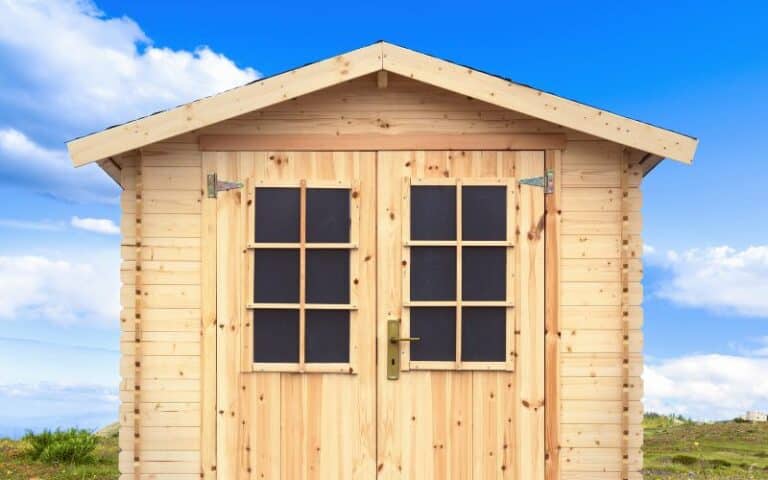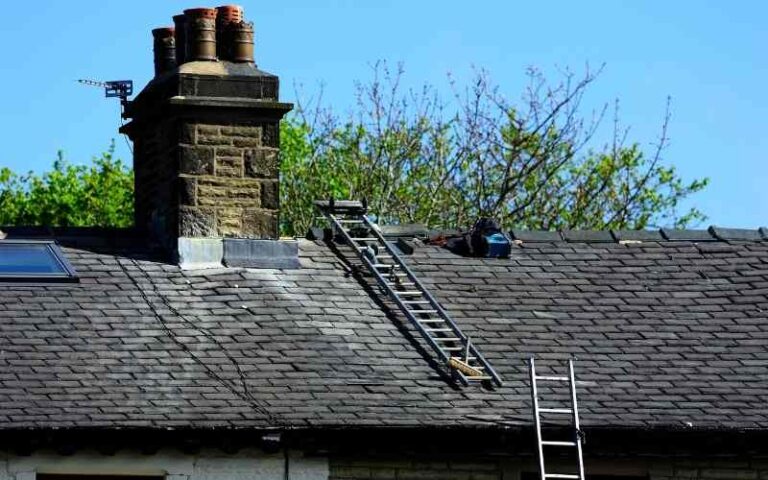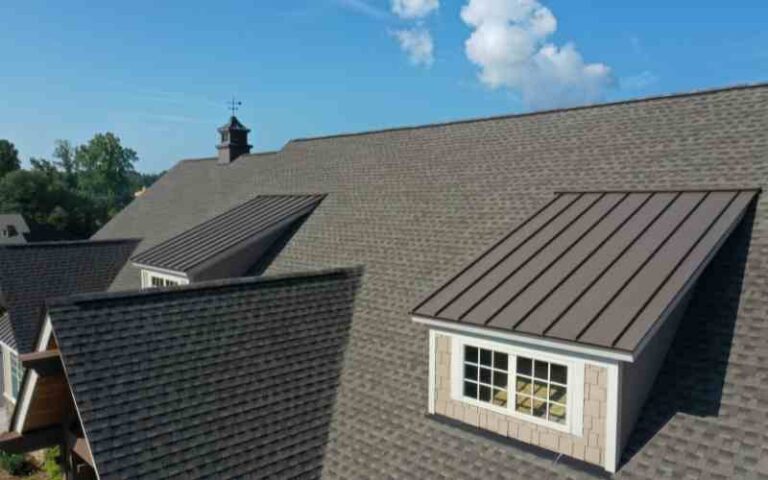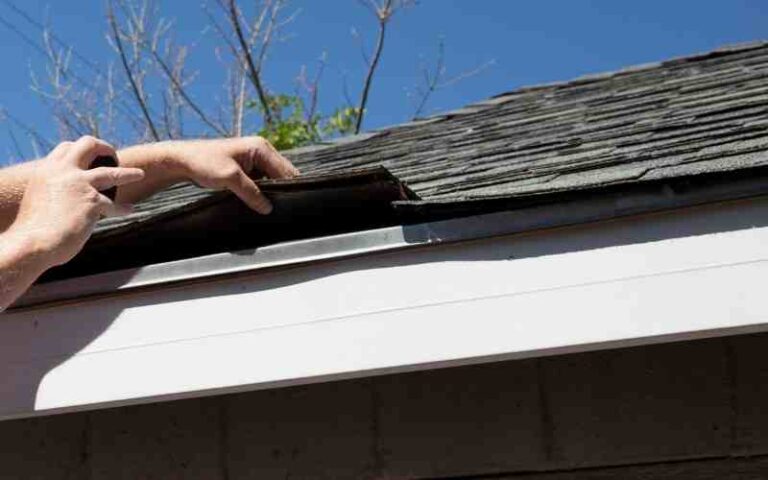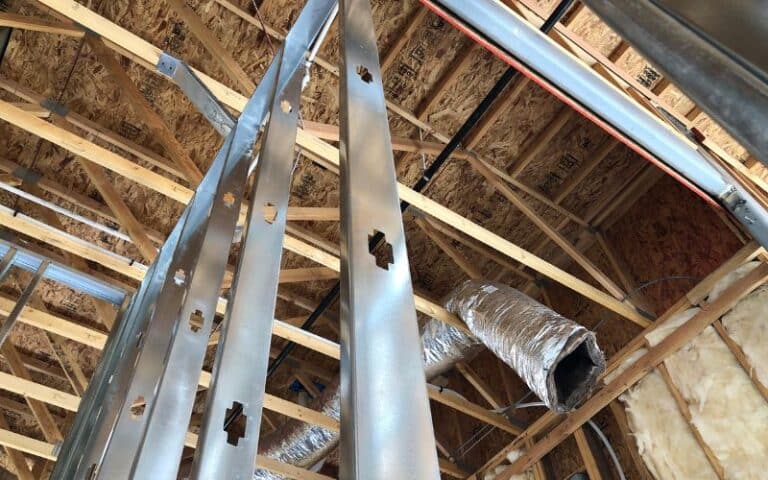The roof is one of the most crucial structures in buildings since it serves as protection.
It shields the interiors from harsh weather conditions and environmental discomfort. Most importantly, everyone wants roofs that will keep functioning for years.
However, for a long-lasting roof, you need quality materials for the construction.
Among these elements is the plywood, a layer beneath the roof. But why should I use plywood for roof decking?
Plywoods are ideal for roof decking because it’s strong, durable, cheap, and lightweight. Their ability to readily absorb and release moisture swiftly puts them at an advantage over other roof sheathing materials. Besides, plywoods are easy to work on and will support the roofing weight.
Ready for a Roofing Quiz?
Can Plywood Be Used over Plank Roof?
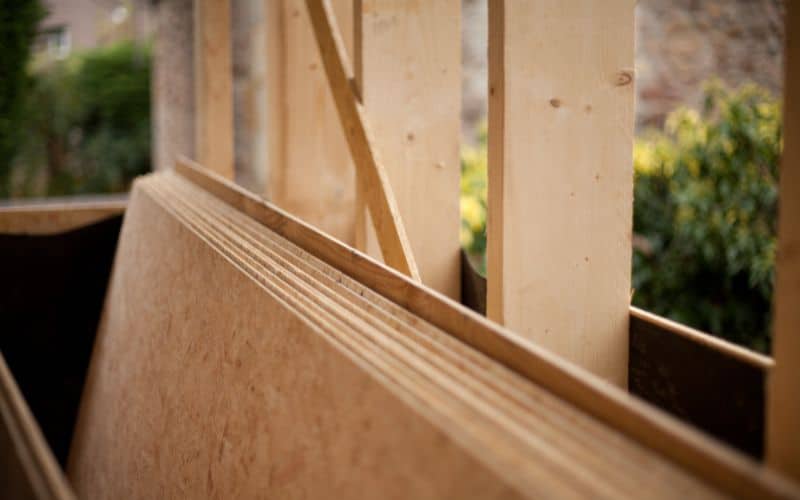
Plywoods come in handy as deckings for over-plank roofs; moreover, their strength makes them able to withstand snow and other harsh weather conditions.
Even when they get wet, the moisture evaporates in no time. Plywood comes in 4 by 8 feet and various grades –grade A-D.
Grade A is the plywood with the highest quality because it lacks knots that make plywoods vulnerable to weakness. Due to its high quality, grade A is expensive.
However, not everyone can afford to buy the grade A sheets, so a common and cost-saving alternative is the CDX.
It’s a combination of grades A and D, while the X represents the glue that holds the sheet layer together.
Although the CDX grade isn’t of the high-quality grades, it’s the strongest and most suitable for roofing projects.
Is Plywood Good for Roofing?
Plywood is good for roof decking owing to its structural stability and pocket-friendliness, so you have nothing to worry about if you’re on a low budget.
It dries quickly upon exposure to moisture (rain), protecting the roofing from damage.
Plywood is a product of joining several layers of wood together; hence there’s enough strength in the plywood.
As a result, plywood can support the heavy weight of the roof. Besides their outrageous strength, they are lightweight.
When wet, plywood swells exceeding its normal size and return to its original size after drying. But after continuous exposure to rain, the damage might set in.
Hence, use an epoxy sealer or latex-based paints to waterproof the wood and ensure its longevity.
Is ½” Plywood Good for Roofing?
Plywoods that are ½” thick are good for roofings, especially with rafters 20 inches apart, because this plywood can support the roof’s weight.
However, ensure to fix the underlayment properly before using ½-inch plywood.
Furthermore, this size of plywoods is applicable for residential roofing purposes and not for industrial purposes with rafters spacing of 24 inches.
Also, ½ inch is generally preferable for wall sheathing, as most window and door frames come with ½ inch plywood.
Is ½” Plywood Ok for a Roof?
Plywood of ½” is ok for a roof; moreover, the standard thickness for roof decking ranges from ½” to ⅝.”
Thus, if you’re using OSB (Oriented Strand Board), the most suitable thickness is ⅝.” Still, for plywood (stronger than OSB), the appropriate thickness is ½.”
Furthermore, roofing materials Producers recommend that you leave a minimum spacing of 24″ on the rafters when using ½” plywood roof sheaths.
Can You Put New Plywood over an Old One on a Roof?
If the old plywood is clean and free from damage, covering it with new plywood won’t be a bad idea. But before adding the new one, get the roof’s parameters.
It’ll help ascertain whether the new plywood’s weight will be beyond the capability of the roof’s support structure or not.
While installing, nail the plywood to the rafters, not only the existing plywood. Doing this will prevent the sagging of the old plywood by relieving it of the roof’s weight.
Furthermore, ensure to use the same thickness you would use if installing the plywood directly on the rafters.
In addition, before the new plywood installation, remove the moisture barrier from the previous plywood.
And use nails that should be long enough to penetrate more than ¾ inch of the roof’s rafters. You can place new plywood over the old one if the old one is in good condition.
Can You Double Plywood over a Plank Roof?
You can double the plywood for decking over a plank roof. Besides, you can either install new plywood on an old one or use two new ones.
The only condition that satisfies the addition of new plywood on an old one is if the old one is still in good condition.
There are lots of benefits to enjoy while using double plywood for roofing sheathing, so also there are many inconveniences that come along with it.
Let’s dive into some of them;
Pros
Here are some of the advantages of doubling the plywood as it helps strengthen the roofings;
#1. It saves time
One good reason people double plywood over a plank roof is that it saves time and energy.
Instead of spending hours removing the old ones, you can nail the new ones directly on the old ones in no time.
In addition, removing the old deck can mess up the whole process, and fixing will cost much.
#2. Pocket-friendliness
Apart from the installation being time-saving, it saves money too. While removing the old plywood, some damages or errors lead to another cost to bear. On the other hand, fixing new plywood directly on the old ones reduces cost.
#3. Moisture Resistance
Double plywood decking over a plank roof reduces the chances of moisture-related damages.
On the other hand, in a single plywood deck, little moisture might go below the deck before the water dries.
Cons
Although doubling the plywood over the rafters is a good practice, it could have some inevitable implications. Here are some of them;
#1. It Leads to Improper Installation
It’s compulsory to nail the new plywood to the rafters. But without removing the initial plywood, it becomes difficult to locate the position of the rafters.
Hence you’ll miss the rafters and only attach the new plywood to the old plywood. This error makes the roofing susceptible to heavy wind damage.
One way to avoid this mistake is to use chalk to mark out the position of the rafters on the plywood before nailing. And also, use long nails that penetrate the two plywoods and rafters.
#2. Unnecessary Increase in Weight
Roofs aren’t capable of bearing outrageous weights, so adding a new layer of plywood that will increase the weight on the roof could be a regret.
Square plywood of size 100 square feet with ⅜ inches thickness roughly weighs 110 pounds, while a standard three-tab asphalt shingle roof weighs between 225 pounds to 300 pounds per square foot.
With all these weights, additional weight will soon stress the roof and collapse.
#3. Difficulty in Detecting Leakages
When adding a new layer, roof repair professionals find detecting leakages and other faults challenging.
For instance, if the layer above leaks, water might move a little distance to a nearby opening in the beneath layer before the water drops into the house.
However, if the Roofer seals the opening in the layer beneath, water leaking from the above layer will still destroy the layer beneath.
At a Glance: Pressure Treated Vs. Douglas Fir (In-Depth Comparison)
Here’s a tabular representation of the pros and cons of doubling plywood roof sheathing over plank;
| Pros | Cons |
|---|---|
| Time-saving and easy installation | High occurrence of errors during installation |
| Pocket friendly | Unnecessary Increase in weight |
| Moisture resistant | Difficulty in detecting leakages |
Final Thoughts
Roof decking is necessary for roof construction as they ensure the longevity of the roofs.
Some people prefer installing new roof decks on old ones since it saves time and cost; consequently, the additional weight weakens the roof.
Plywoods, one of the most suitable roof sheathing materials, are long-lasting, durable, and strong, although their thicknesses vary.

